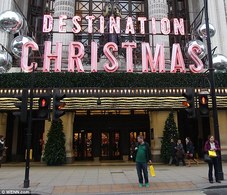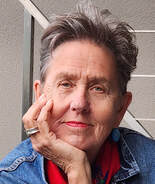Christmas is a snow job … and even the snow is fake. Why, in an only nominally Christian country ,do we still subject ourselves to the stress and aggravations of Christmas - and a northern hemisphere version of Christmas at that?

Santa is the real God of modern Christmas. Images of the baby Jesus in a stable are displayed in shop windows almost interchangeably with images of Santa wreathed in holly and unreasonable, unseasonable snow.
I imagine that some kids these days are so confused that they think it’s baby Santa they see napping in the hay. They may well think that the baby, grown paunchy and whiskery with age, has simply moved to cooler climes and swapped his swaddling clothes for red, fur-trimmed long-johns.
We could blame the manufacturers and retailers who profit from the sale of gifts, spray-on snow, tinsel and Christmas cards. We could blame the advertising industry.
And we could blame Hollywood’s depictions of Christmas, the New York variant of which is particularly attractive. You know the one … it’s Christmas Eve in a warmly-lit Park Avenue apartment. Artfully wrapped gifts lie heaped beneath an exquisitely decorated tree. Wave after wave of friends and family arrive borne on gusts of laughter and chatter, bearing even more gifts: perfect cashmere sweaters from Bloomingdales and jewellery from Tiffany. On Christmas morning everyone gathers around the tree, hair artfully mussed, still wearing their adorably goofy pajamas. Photogenic little poppets tear perfect wrappings from perfect presents while their parents exchange misty-eyed looks. The candle-lit table groans with food and gleams with the best silverware and crystal. After dinner, everyone, wittily and amusingly, plays charades. Snow drifts past the window. Not, of course, the freezing wet kind that reddens your nose and makes it dribble. No, it’s the other kind: snow that settles gently on the eyelashes of young folk carolling on the street. After dinner, every one settles in front of a fire to watch the reruns of old movies in which Bing Crosby or Judy Garland - those Ghosts of Christmases Past - sing their hearts out.
But we wouldn’t be as vulnerable to the blandishments of Retail or Hollywood, if they didn’t touch on some deep longing in all us to feel connected to those around us, to love and be loved, to give and to receive. Irving Berlin’s classic song, “I’m Dreaming of a White Christmas” is infused with longing only because he wrote it while he was living in Los Angeles where it never snows. Perhaps if we recognised and responded to our need for connection and recognition on the other 364 days of the year, fewer of us would end up emotionally and financially over-spent at Christmas?
In early December I came to a stop in the dark pre-Christmas woods, trying to decide which fork to take: the path that leads to Scrooge and The Grinch, or the road to harassed Christmas list-making and gift-shopping. At that very moment a book called “Crossing to Safety” came into my hands. It materialised magically in the way that books often do - just when you are most receptive to their language, mood, or ideas. Although the cover blurb describes it as one of “the most cherished novels of the twentieth century”, I’d never before heard of the book (first published in 1987) or of its American author, Wallace Stegner.
The book is about the life-long friendship between two married couples who come of age during the Depression and all the ordinary joys and challenges of their intertwined lives - children, work, illness and the tensions implicit in long marriage and friendship. The characters are “decent, gracious, compassionate and understanding and cultivated and well-meaning”. The writing is like that too, and infused with a deep appreciation of flora, fauna landscape and climate. A story about characters like this, living ordinary lives and told with restraint, might sound dull but it is not. The book is compelling reading, all the more so for its quiet and rectitude. Absolutely without sentimentality it celebrates, and makes luminous all the best impulses of the human heart for love and friendship. At the geographical heart of the story is the lake-side family enclave where the book’s protagonists gather for holidays during the decades of their friendship. “It’s the place” the narrator explains, where “during the best time of our lives, friendship had its home, and happiness its headquarters”.
Christmas as we currently celebrate it would surely fade away if we could spend more of our everyday lives the “home of friendship and the headquarters of happiness” and invite others to dwell with us there?
Until then … Deck the Halls and Jingle your Bells. Mommy, please Kiss Santa Claus under the Mistletoe. Depending upon your sexual orientation please feel free to Make the Yuletide Gay. Have Yourself a Merry Little Christmas, May Your Days Be Merry and Bright. Feliz Navidad!
 RSS Feed
RSS Feed

